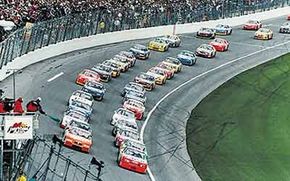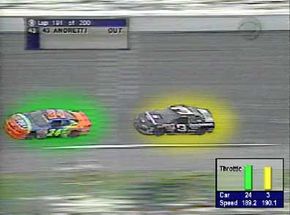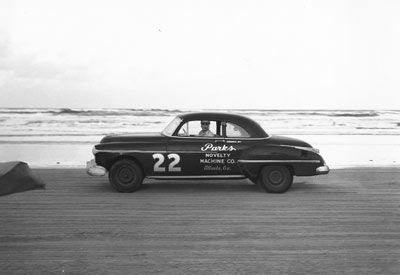The millions of NASCAR fans that tune in to watch Winston Cup races every weekend of the NASCAR season are watching the races like never before. The race cars of their favorite drivers are glowing as they whip around the track at breakneck speeds. What's causing this mysterious glow?
SportvisionTM, the same company that brought you the superimposed 1st and TenTM line in football, has created RACEf/xTM technology to enhance the viewer's experience.
Advertisement
RACEf/x is similar to the hockey puck tracking technology that Fox once used in televising National Hockey League games. That puck-tracking system used television cameras to track the hockey puck on the ice rink, making it appear to TV viewers that the puck was glowing. Sportvision is doing the same thing to your favorite NASCAR race cars. As you watch the race on TV, commentators choose a car that they are talking about. Then, using GPS satellite receivers in car sensors and television cameras, the RACEf/x system tracks that car and places a glowing halo around it. Viewers can also see graphics superimposed on the screen above the car, showing statistical information of the car's performance.
In this edition of HowStuffWorks, you'll learn how the RACEf/x system tracks cars flying around a race track at speeds of up to 200 mph. We'll examine the benefits this technology offers the television audience as well as what future applications are in store for RACEf/x that will make television viewing even more interactive.
Advertisement




